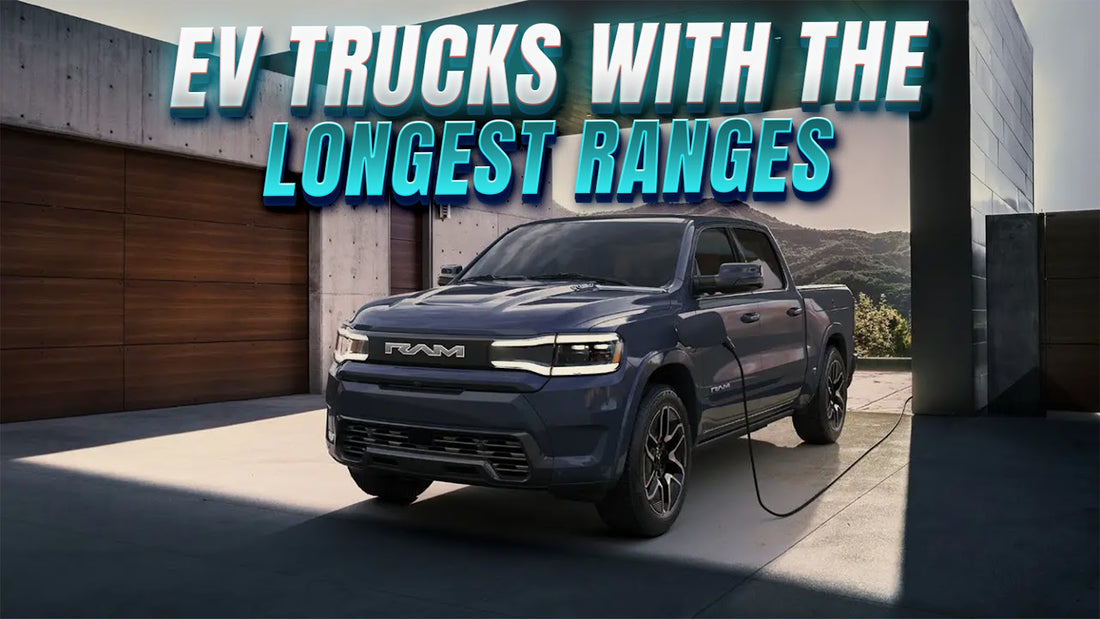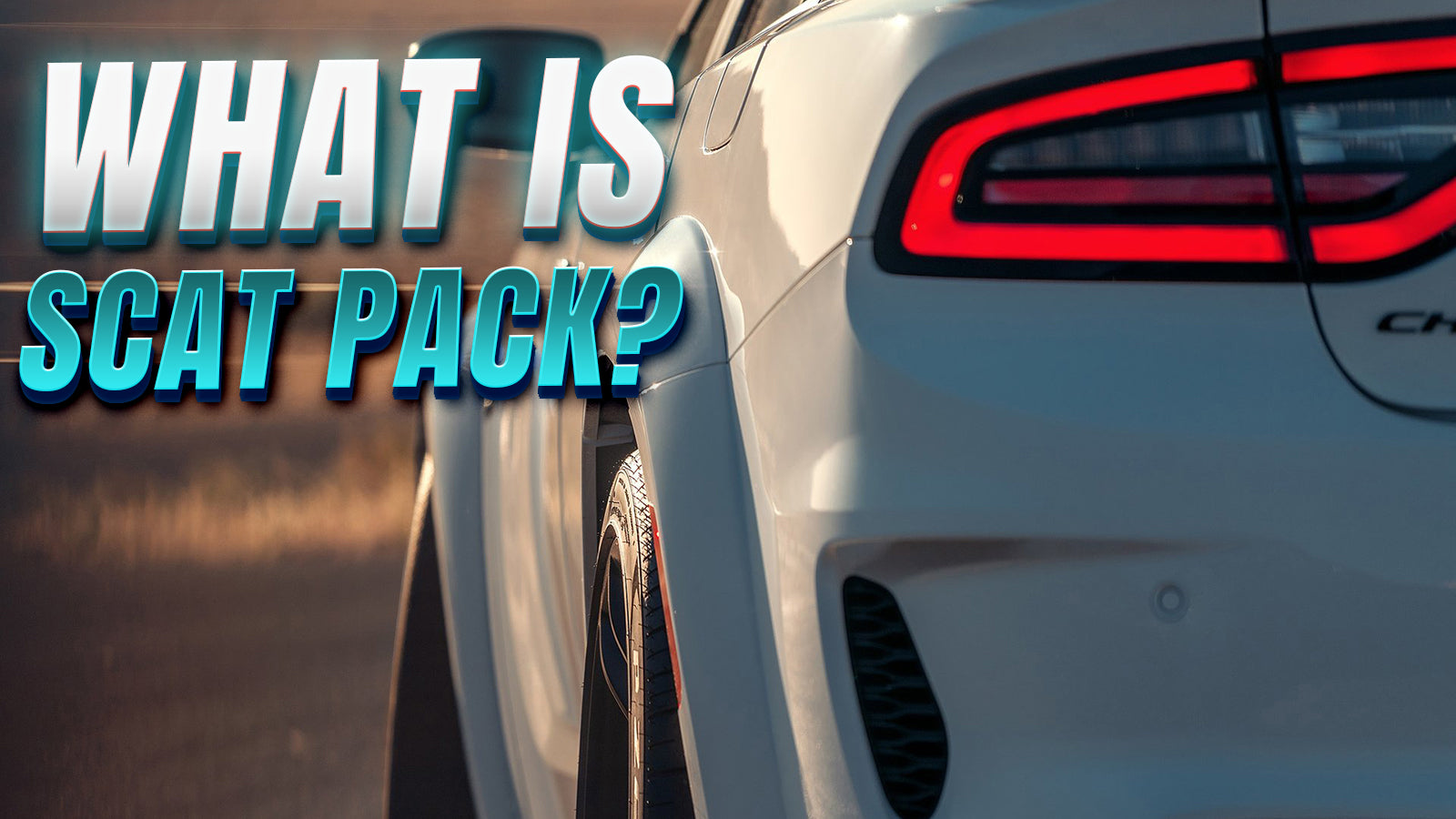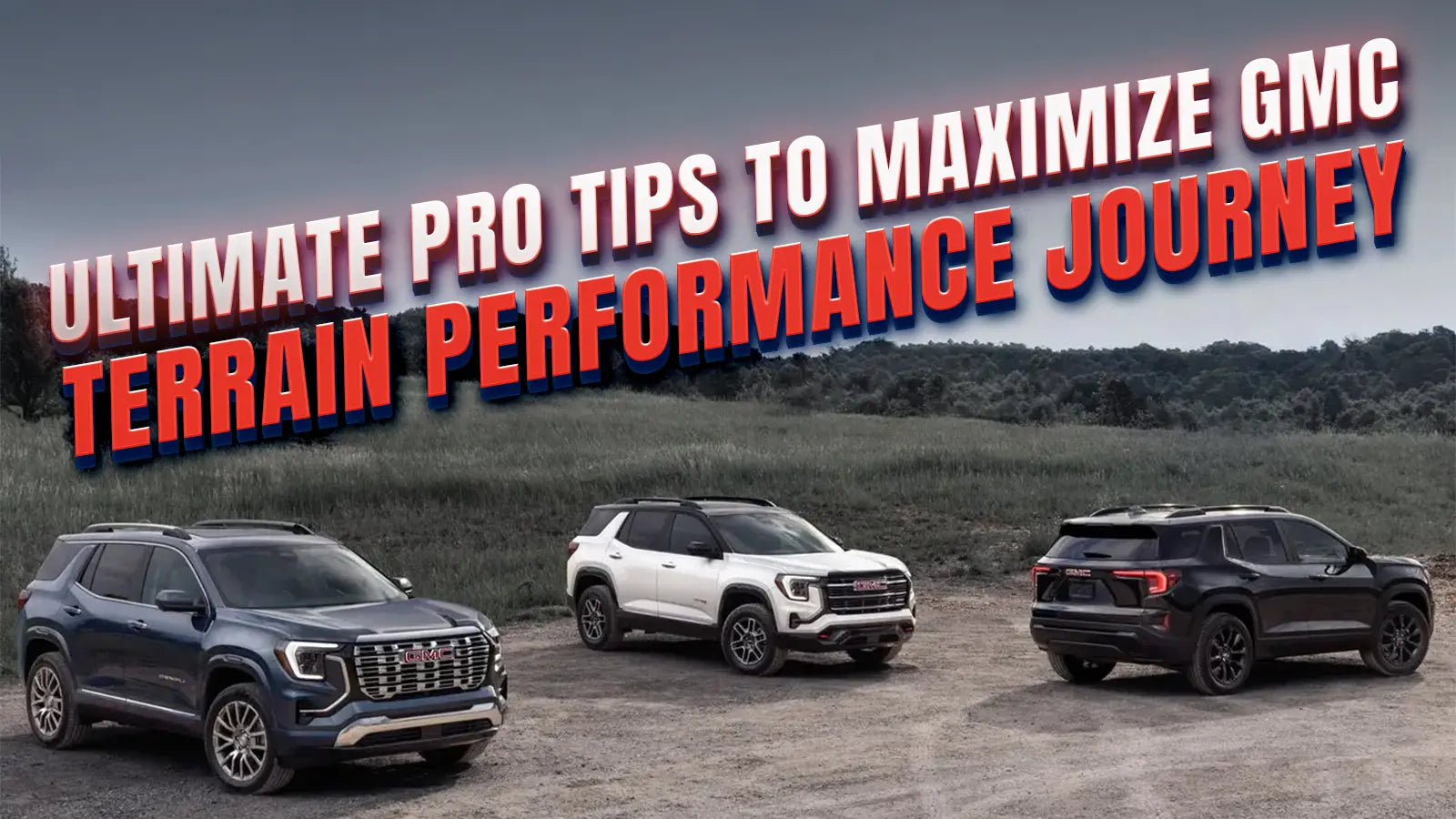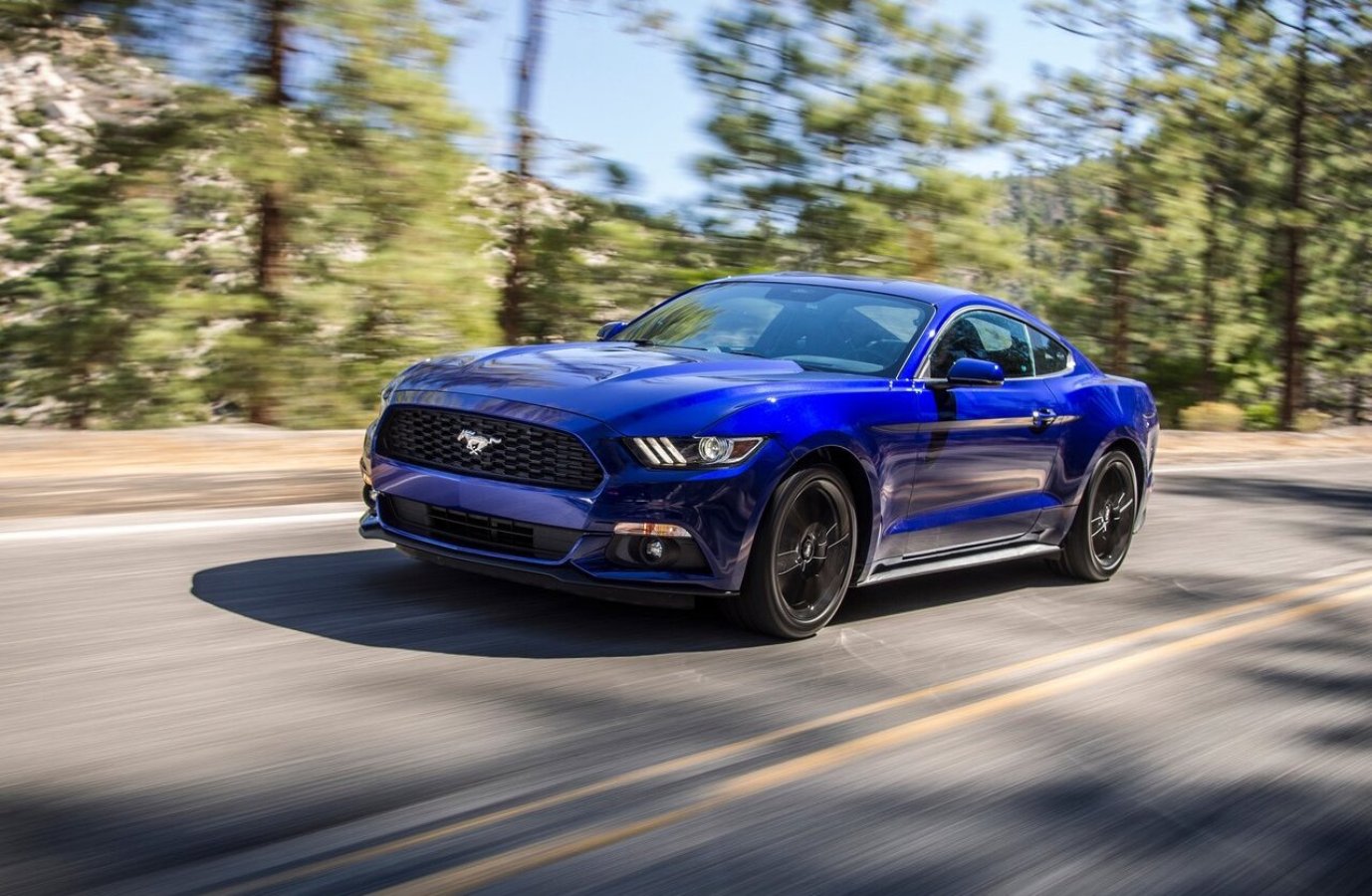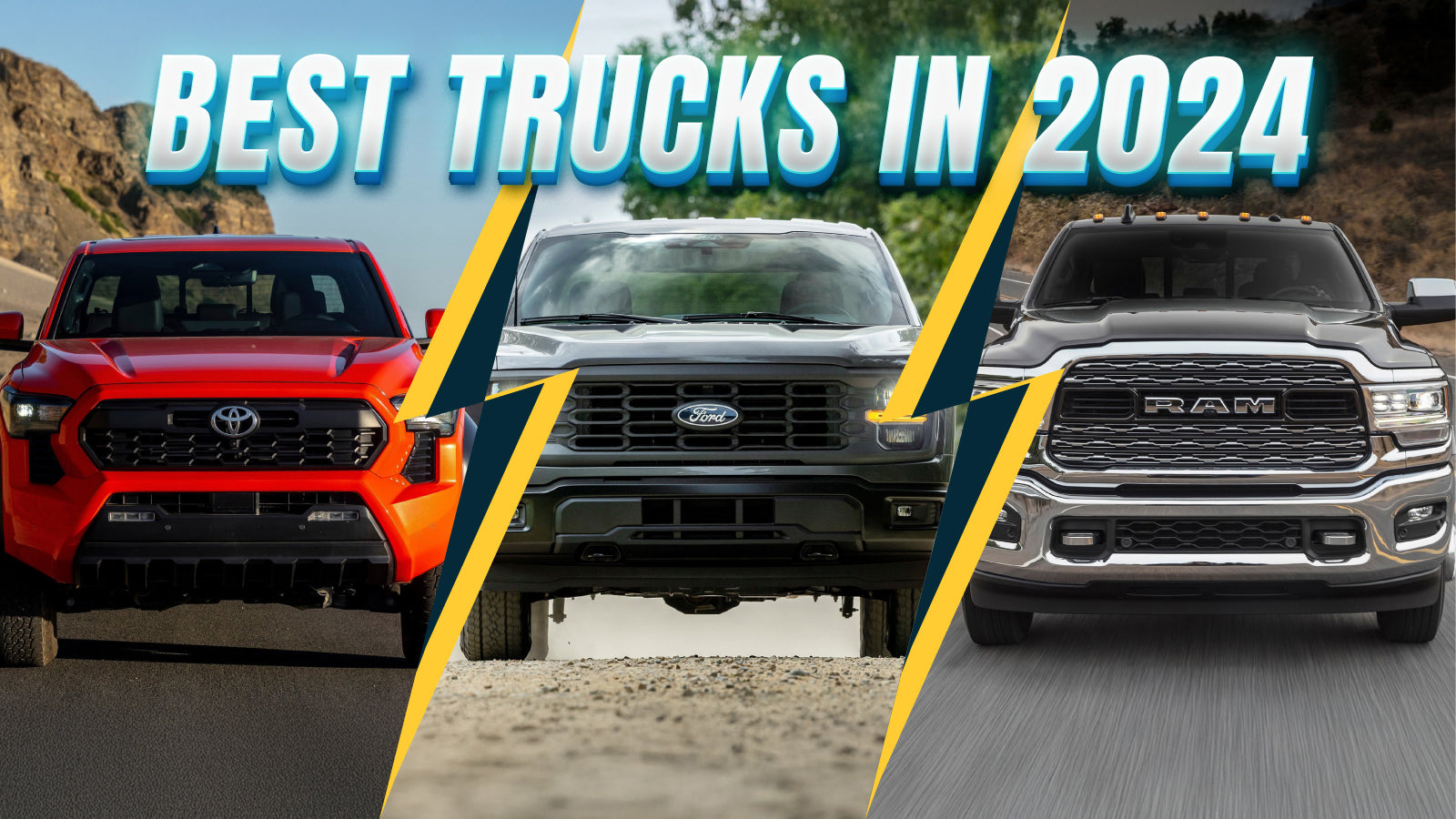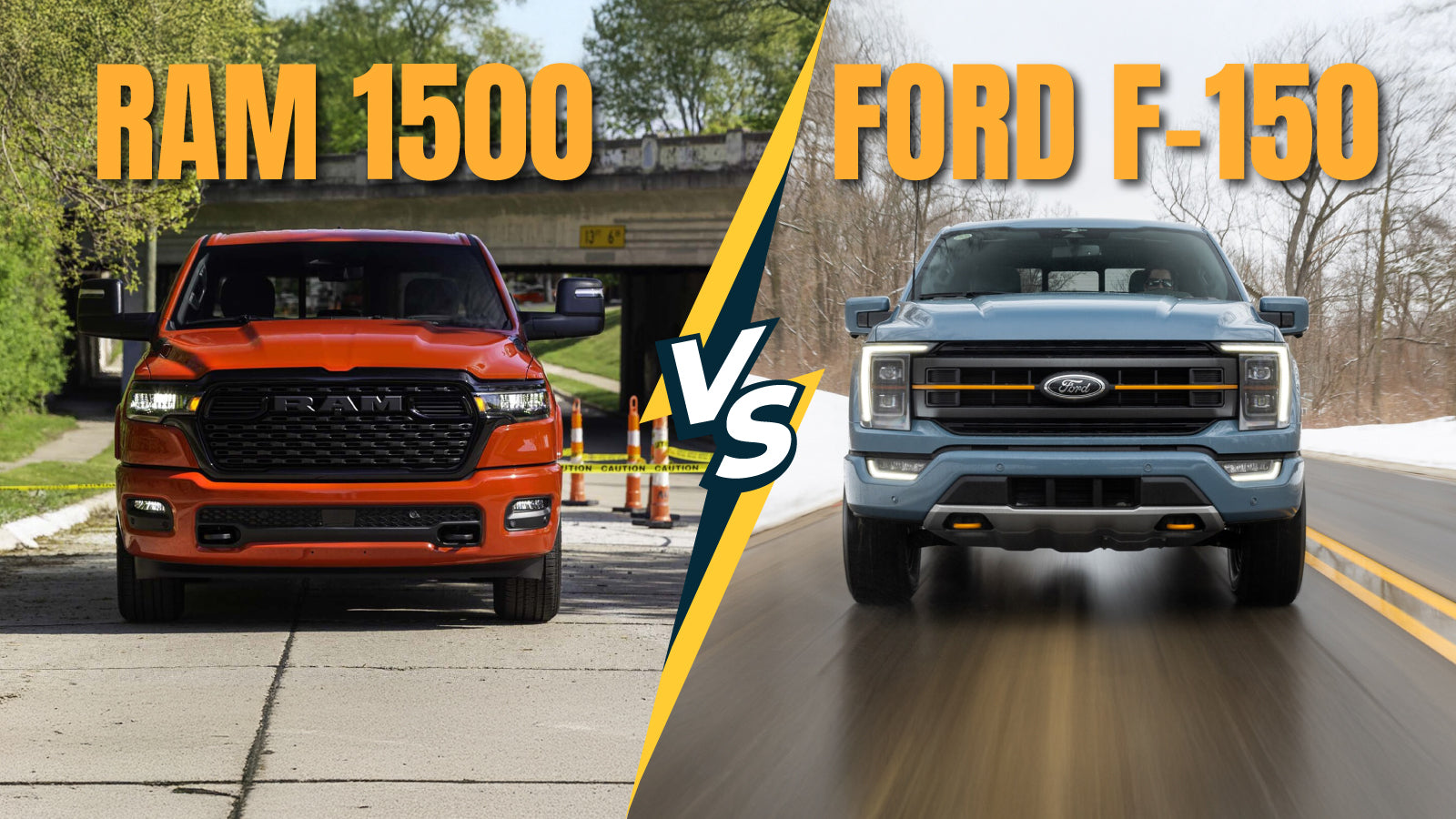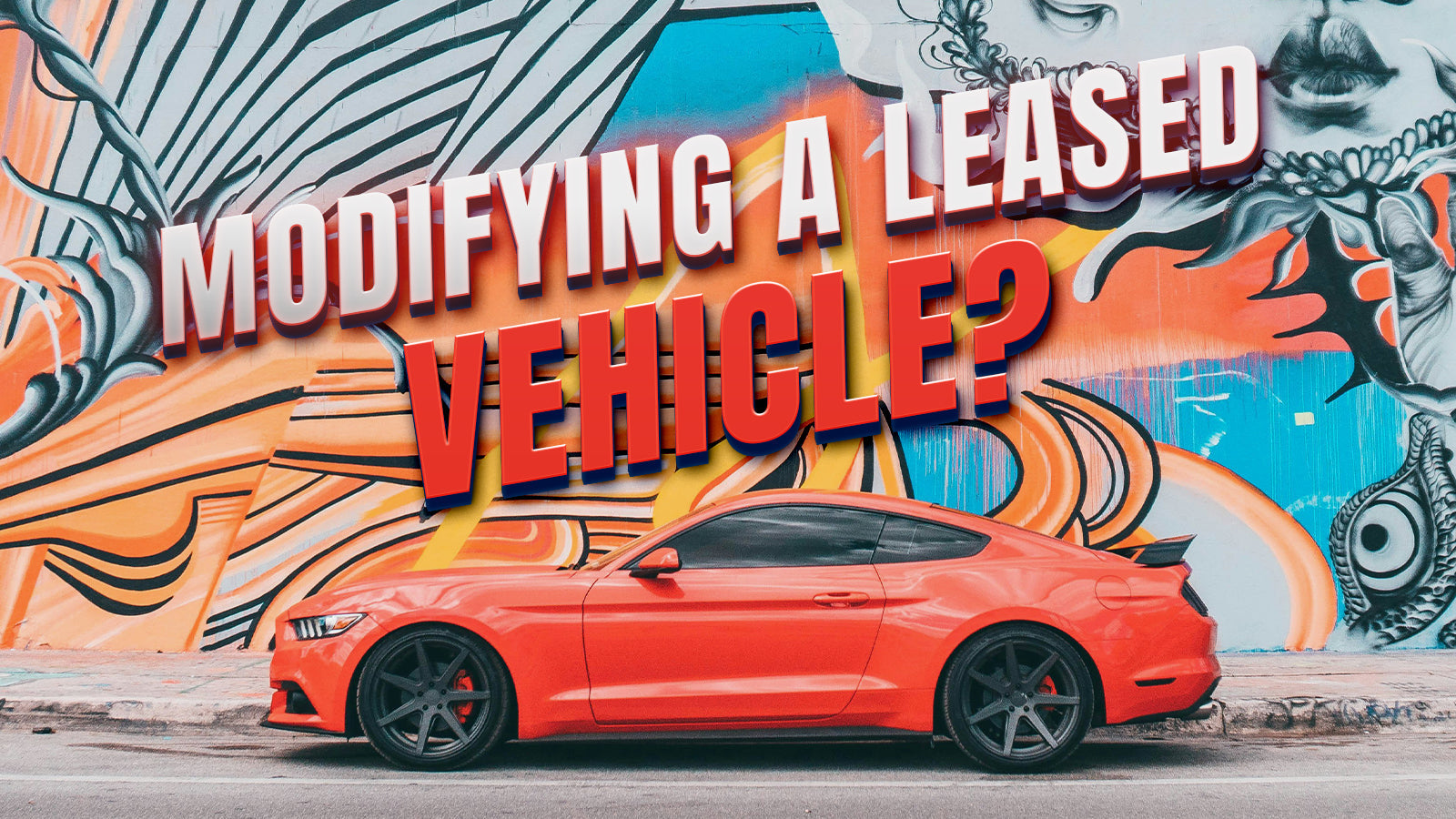وداعًا للقلق بشأن المدى: 7 شاحنات كهربائية ببطاريات تدوم طويلًا
يشارك
في عالم السيارات الكهربائية سريع النمو، لا يزال هناك قلقٌ يُثقل كاهل المشترين المحتملين: قلق المدى - الخوف من نفاد طاقة البطارية قبل الوصول إلى محطة الشحن. وينطبق هذا بشكل خاص على من يفكرون في اقتناء الشاحنات الكهربائية للمهام الشاقة مثل القطر، والجر، والقيادة على الطرق الوعرة، أو القيادة لمسافات طويلة. ولكن لا داعي للقلق، فالموجة الأخيرة من الشاحنات الكهربائية تُغير مجرى الأمور، حيث تُوفر بطاريات بمدىً مذهل.
في هذه المقالة، سنناقش كل ما يتعلق بالشاحنات الكهربائية، بدءًا من أنواعها المختلفة ووصولًا إلى العوامل المؤثرة على مدى بطارياتها، ثم نستعرض 7 شاحنات كهربائية ذات بطاريات تدوم طويلًا. بمجرد فهمك لما تتناوله هذه المقالة، لن تقلق بشأن البحث عن محطة الشحن التالية. وإذا كنت تبحث عن كيفية زيادة مدى سيارتك الكهربائية والحصول على أقصى مدى من شاحنتك الكهربائية، فتابع القراءة حتى النهاية!
ما هو نطاق EV؟
يشير مدى السيارة الكهربائية إلى المسافة التي يمكن أن تقطعها السيارة الكهربائية، بما في ذلك الشاحنات الكهربائية، بشحنة واحدة كاملة لبطاريتها. ويحدد هذا المدى المسافة التي يمكن أن تقطعها السيارة الكهربائية قبل الحاجة إلى إعادة الشحن. وهنا يبرز مفهوم القلق بشأن المدى.

ما هو قلق مدى السيارة الكهربائية؟
يعاني بعض مالكي السيارات الكهربائية الحاليين والمحتملين من قلق المدى، والذي يشير إلى الخوف أو القلق من نفاد شحن بطارية السيارة الكهربائية قبل الوصول إلى محطة الشحن أو الوجهة.

ما هي أنواع النطاقات المتاحة للشاحنات الكهربائية؟
سواء كنت تستخدم شاحنتك الكهربائية للتنقل اليومي، أو تقودها على الطرق الوعرة، أو تحمل حمولات ثقيلة، فمن الضروري معرفة المسافة التي تستطيع شاحنتك الكهربائية قطعها بشحنة واحدة. يُعد فهم أنواع تصنيفات المدى المختلفة المتاحة للشاحنات الكهربائية أمرًا بالغ الأهمية لاتخاذ قرارات مدروسة. لذا، دعونا نلقي نظرة على أنواع تصنيفات المدى المختلفة المستخدمة في الشاحنات الكهربائية وتأثيرها على تجربة قيادتك.

مجموعة وكالة حماية البيئة
يُعدّ نطاق وكالة حماية البيئة (EPA) المقياس الأكثر شيوعًا وموثوقيةً في الولايات المتحدة لقياس مدى السيارات الكهربائية. يُحسب هذا الرقم بناءً على اختبارات معيارية تُحاكي القيادة في المدينة والطرق السريعة. يُعطي نطاق وكالة حماية البيئة السائقين تقديرًا موثوقًا للمسافة التي ستقطعها شاحناتهم الكهربائية في ظروف قيادة مختلطة.
نطاق WLTP
إجراء اختبار المركبات الخفيفة الموحد عالميًا (WLTP) هو مقياس لمدى السيارات الكهربائية يُستخدم في أوروبا وأجزاء أخرى من العالم. عادةً ما يكون أكثر تفاؤلاً من أرقام وكالة حماية البيئة الأمريكية (EPA). على الرغم من أن اختبارات WLTP لا تزال موحدة، إلا أنها قد تُعطي تقديرات أعلى للمدى لأنها تأخذ في الاعتبار ظروف قيادة مختلفة، ولكنها غالبًا ما تكون أقل صرامة من اختبارات وكالة حماية البيئة الأمريكية.
مجموعة NEDC
اختبار القيادة الأوروبية الجديدة (NEDC)، الذي كان يُستخدم سابقًا في أوروبا، والذي استُبدل بشكل كبير باختبار WLTP، هو إجراء قديم لاختبار كفاءة استهلاك الوقود والانبعاثات. يُركز هذا الاختبار على ظروف القيادة المثالية، مع عدد أقل من التوقفات وسرعات منخفضة، مما يؤدي غالبًا إلى تقديرات مبالغ فيها للمدى. وبناءً على ذلك، تُعتبر أرقام NEDC متفائلة للغاية ولا تعكس القيادة في الواقع. لذا، تُحقق معظم السيارات الكهربائية مدىً أقل بكثير في الظروف الحقيقية من تصنيفات NEDC.
مدى العالم الحقيقي
قد يختلف المدى الفعلي اختلافًا كبيرًا عن تقديرات وكالة حماية البيئة (EPA) أو اختبار المركبات الخفيفة الموحد عالميًا (WLTP). عوامل مثل أسلوب القيادة، والطقس، والتضاريس، وحمولة الشاحنة (خاصةً عند القطر) قد تؤثر على المدى الفعلي. قد يكون أداء الشاحنات الكهربائية أفضل في القيادة داخل المدينة بفضل الكبح المتجدد، ولكنها ستشهد مدىً أقل على الطرق السريعة أو عند القيادة تحت حمولة ثقيلة.
سلسلة المدينة
غالبًا ما تُحسّن الشاحنات الكهربائية من أدائها في حركة المرور المتقطعة بفضل نظام الكبح المُتجدد، الذي يُعيد الطاقة عند تباطؤ الشاحنة. عادةً ما يُمثل مدى القيادة في المدينة المسافة التي يُمكن للشاحنة الكهربائية قطعها في المناطق الحضرية، حيث تُستخدم هذه الميزة المُتجددة بشكل أكثر تكرارًا، مما يُؤدي غالبًا إلى مدى أطول من القيادة على الطرق السريعة.
نطاق الطريق السريع
القيادة على الطرق السريعة تستهلك طاقة أكبر في الشاحنات الكهربائية، إذ يتطلب الحفاظ على سرعات عالية إنتاج طاقة أكثر ثباتًا. لذا، يُظهر تقدير مدى القيادة على الطرق السريعة المسافة التي يمكنك قطعها بسرعات أعلى.
نطاق القطر
غالبًا ما تُصمَّم الشاحنات الكهربائية لسحب حمولات ثقيلة، إلا أن السحب يُقلِّل المدى بشكل كبير. عند السحب، تستهلك الشاحنات الكهربائية طاقة أكبر بكثير، مما يُقلِّل المدى الإجمالي للشاحنة مقارنةً بعدم السحب. كلما زاد ثقل الحمل وصعوبة ظروف القيادة (مثل التلال أو السرعات العالية)، انخفض مدى السيارة الكهربائية. لذا، يُقلِّل السحب المدى بشكل كبير، وغالبًا ما يُخفِّضه بنسبة 30-50%.
ما هي العوامل التي تؤثر على مدى بطارية شاحنة EV؟
هناك عدة عوامل تؤثر على مدى بطارية الشاحنة الكهربائية، أي المسافة التي يمكنك قطعها بشحنة واحدة. ويمكن لهذه العوامل إما أن تزيد أو تقلل عدد الأميال التي يمكنك قطعها بشحنة واحدة. لذا، إليك تفصيل أكثر تفصيلاً للعوامل التي تؤثر على مدى بطارية الشاحنة الكهربائية:

وزن السيارة
كلما زاد وزن الشاحنة الكهربائية، زادت الطاقة اللازمة للتحرك، مما يؤثر بشكل مباشر على مدى سيرها. في حين أن الشاحنات الكهربائية الأكبر حجمًا غالبًا ما تأتي مزودة ببطاريات أكبر لموازنة وزنها، فإن نقل البضائع والركاب أو سحب مقطورة يزيد من الوزن الإجمالي، مما يزيد من إجهاد البطارية. لذا، فإن تقليل الحمل غير الضروري يمكن أن يساعد في إطالة مدى سير شاحنتك الكهربائية، خاصةً في الرحلات الطويلة.
الديناميكا الهوائية
يؤثر شكل وتصميم الشاحنة الكهربائية على كفاءة اختراقها للهواء. فالشاحنات الكهربائية ذات التصميم الانسيابي الانسيابي تُعاني من مقاومة أقل، مما يُقلل الطاقة اللازمة للحفاظ على السرعة. من ناحية أخرى، قد تُواجه الشاحنات الكهربائية ذات التصميمات الصندوقية أو تلك المُجهزة بملحقات مثل حوامل السقف، والمرايا الكبيرة، أو أنظمة التعليق المرتفعة مقاومة أكبر للرياح، مما يُقلل من مدى القيادة. وقد تُزود بعض الشاحنات الكهربائية بمساعدات ديناميكية هوائية، مثل مصاريع الشبك الأمامي النشطة أو أنظمة التعليق الهوائي، لتحسين الكفاءة عند السرعات العالية.
حجم البطارية وسعتها
حجم حزمة البطارية، المُقاس بالكيلوواط/ساعة، هو العامل الرئيسي المُحدد لمدى الشاحنة الكهربائية. تستطيع الشاحنات الكهربائية ذات البطاريات الأكبر تخزين طاقة أكبر، مما يسمح لها بالسير لمسافات أطول بين الشحنات. على سبيل المثال، قد تُوفر بعض الشاحنات الكهربائية خيارات بطاريات مُختلفة، حيث تُزيد الحزم الأكبر من المدى المُتاح بشكل كبير. ومع ذلك، تُضيف البطاريات الأكبر وزنًا إلى الشاحنة الكهربائية، مما قد يُقلل من كفاءتها بشكل طفيف.
عمر البطارية وصحتها
مع تقدم عمر بطارية الشاحنة الكهربائية، تقل قدرتها على الاحتفاظ بالشحن. ويحدث تدهور البطارية بمرور الوقت بسبب دورات الشحن والعوامل البيئية مثل درجات الحرارة العالية. يمكن للبطارية التي تُصان جيدًا أن تدوم لسنوات عديدة، لكن البطارية القديمة أو سيئة الصيانة ستوفر مدىً أقل. يمكن للعناية الجيدة بالبطارية، مثل تجنب الشحن السريع المتكرر والتعرض لدرجات الحرارة العالية، أن تساعد في الحفاظ على صحتها وزيادة مدى القيادة إلى أقصى حد.
أحوال الطقس
كيف يؤثر الطقس البارد على مدى السيارة الكهربائية؟ تؤثر درجات الحرارة القصوى، سواءً الحارة أو الباردة، سلبًا على أداء البطارية. يمكن أن يقلل الطقس البارد من مدى السيارة بنسبة 20-40% بسبب بطء التفاعلات الكيميائية في البطارية وزيادة استهلاك الطاقة من أنظمة التدفئة. كما تُسبب درجات الحرارة المرتفعة ضغطًا على البطارية، حيث تستخدم أنظمة التبريد طاقة إضافية للحفاظ على درجات حرارة البطارية المثلى.
أسلوب القيادة
يؤثر أسلوب قيادتك بشكل مباشر على مدى شاحنتك الكهربائية. التسارع القوي، والكبح السريع، والسرعات العالية باستمرار تُستنزف البطارية بشكل أسرع. يساعد أسلوب القيادة الأكثر تحفظًا، مع التسارع السلس، والسير بسلاسة عند الإمكان، والحفاظ على سرعات معتدلة، على الحفاظ على عمر البطارية.
ضغط الإطارات
الحفاظ على ضغط الإطارات الأمثل أمرٌ بالغ الأهمية لزيادة كفاءة مدى القيادة للشاحنة الكهربائية. فالإطارات غير المنفوخة تُزيد من مقاومة الدوران، مما يُجبر محرك الشاحنة الكهربائية على العمل بجهد أكبر ويُستنزف البطارية بشكل أسرع، مما يُقلل من مدى القيادة. من ناحية أخرى، قد يؤدي ضغط الإطارات الزائد إلى انخفاض قوة الجر وتآكل غير متساوٍ. يُحسّن فحص ضغط الإطارات بانتظام والحفاظ عليه ضمن النطاق الموصى به من قِبل الشركة المصنعة من الكفاءة ويضمن أداءً ثابتًا في مدى القيادة.
التضاريس والطريق
يؤثر نوع التضاريس والمسار الذي تسلكه بشكل كبير على كمية الطاقة التي تستهلكها شاحنتك الكهربائية. لنلقِ نظرة عليها أدناه:
- التلال والمنحدرات: يتطلب القيادة صعودًا قدرًا أكبر من الطاقة حيث يتعين على محرك الشاحنة الكهربائية التغلب على الجاذبية، مما يقلل من المدى.
- الطرق المسطحة: وهي مثالية لتحويل طاقة البطارية، حيث يعمل المحرك بكفاءة أكبر على الأرض المستوية.
- الأسطح الوعرة أو الوعرة: تضيف الأسطح الوعرة أو الأسطح الوعرة مقاومة، مما يجبر الشاحنة الكهربائية على استخدام المزيد من الطاقة من أجل الحفاظ على السرعة والاستقرار، مما يقلل من المدى الإجمالي.
- القيادة على المنحدرات: يمكن للنزول من المنحدرات تجديد بعض الطاقة من خلال الكبح المتجدد، مما يساعد على تمديد المدى، على الرغم من أن الكمية المستردة عادة ما تكون صغيرة.
أنواع الشحن وعاداته
تؤثر عادات الشحن ونوع الشحن المُستخدم على سرعة جاهزية الشاحنة الكهربائية للاستخدام وعلى سلامة البطارية على المدى الطويل. فيما يلي تفصيل لأنواع الشحن المختلفة:
- الشحن من المستوى الأول: أبطأ خيار شحن يستخدم مقبسًا منزليًا قياسيًا (١٢٠ فولت). وهو مثالي للشحن الليلي في المنزل أو عند عدم توفر خيارات شحن أخرى.
- الشحن من المستوى الثاني: يتطلب هذا النوع من الشحن منفذًا كهربائيًا مخصصًا بجهد ٢٤٠ فولت، مشابهًا لما يُستخدم للأجهزة الكبيرة. وهو أكثر طرق الشحن شيوعًا في المنازل والأماكن العامة، حيث يجمع بين السرعة والراحة.
- الشحن من المستوى 3: يتوفر الشحن السريع من المستوى 3 (التيار المستمر) في محطات عامة متخصصة، ويستخدم التيار المستمر لشحن الشاحنة الكهربائية بسرعة. هذا الخيار أسرع بكثير من المستويين 1 و2، ولكنه قد يُسبب ضغطًا أكبر على البطارية عند استخدامه بشكل متكرر.
علاوة على ذلك، يمكنك إطالة عمر بطارية شاحنتك الكهربائية. لنلقِ نظرة على عادتين شائعتين للشحن أدناه:
- الشحن الإضافي: يتضمن شحن سيارتك الكهربائية على دفعات صغيرة طوال اليوم، مع الحفاظ على مستوى شحن البطارية بين ٢٠٪ و٨٠٪، وتجنب جلسات الشحن الطويلة. يُعد هذا مثاليًا للتنقلات اليومية أو عند توفر شواحن متكررة.
- الشحن الليلي: يتيح لك هذا الشحن الكامل لسيارتك على مدار عدة ساعات، عادةً باستخدام شواحن من المستويين 1 و2. مع أنه يوفر راحةً للرحلات الطويلة، يُنصح بتجنّب الشحن المنتظم حتى 100% للحفاظ على مدى البطارية.
مُكَمِّلات
يمكن أن تؤثر الملحقات على مدى بطارية الشاحنة الكهربائية بطرق مختلفة. تستهلك أنظمة التحكم في المناخ ومعدات القطر وأجهزة الشحن معظم الطاقة، مما يقلل المدى بشكل كبير، خاصةً في الظروف الجوية القاسية أو أثناء القطر. كما تؤثر أنظمة التبريد والتدفئة في الشاحنات الكهربائية بشكل كبير على مدى البطارية نظرًا لاستهلاكها العالي للطاقة.
7 شاحنات كهربائية ذات بطاريات تدوم طويلاً
تجمع الشاحنات الكهربائية بين مدى قيادة مذهل وقوة هائلة وتكنولوجيا مبتكرة. حتى مع قلق المشترين والمستخدمين المحتملين للشاحنات الكهربائية من مدى القيادة، تتوفر شاحنات كهربائية بمدى قيادة مذهل، مما يجعلها مثالية للقيادة اليومية والمهام الشاقة. إليك أفضل 7 شاحنات كهربائية ذات مدى قيادة طويل للبطاريات:
رام 1500 موديل 2025
- البطارية: 168-229 كيلوواط ساعة
- المدى المقدر للسيارة الكهربائية: ما يصل إلى 500 ميل (مع خيار البطارية 229 كيلووات ساعة)
- المحرك: إعداد الدفع الرباعي المزدوج (AWD)
- قوة الحصان: تصل إلى 654 حصانًا
- عزم الدوران: يصل إلى 620 رطل-قدم
- سعة السحب: حتى 14000 رطل
- سعة الحمولة: 2700 رطل
- مواصفات الشحن: يدعم الشحن السريع بالتيار المستمر بقدرة 350 كيلوواط، مما يضيف مسافة 160 كيلومترًا في 10 دقائق. للشحن المنزلي، يدعم الشحن بالتيار المتردد من المستوى 2، ويدوم شحنه الكامل لمدة تتراوح بين 10 و12 ساعة تقريبًا.
- السعر الابتدائي: 60,000 دولار

شيفروليه سيلفرادو EV 2024
البطارية: ٢٠٠ كيلوواط/ساعة، المدى المقدر للسيارة الكهربائية: حتى ٤٥٠ ميلاً، المحرك: إعداد دفع رباعي ثنائي المحرك ، قوة الحصان: حتى ٧٥٤ حصاناً، عزم الدوران: حتى ٧٨٥ رطل/قدم، سعة السحب: حتى ١٠٠٠٠ رطل، سعة الحمولة: ١٣٠٠ رطل، مواصفات الشحن: يدعم الشحن السريع بالتيار المستمر بقدرة ٣٥٠ كيلوواط، مما يضيف مدىً يصل إلى ١٠٠ ميل في ١٠ دقائق. كما يدعم الشحن بالتيار المتردد من المستوى الثاني بقدرة ١٩.٢ كيلوواط لشحن منزلي أسرع.
- السعر الابتدائي: 75,000 دولار

ريفيان R1T 2024
- البطارية: 135-180 كيلوواط ساعة
- المدى المقدر للسيارة الكهربائية: ما يصل إلى 400 ميل (مع خيار البطارية 180 كيلووات ساعة)
- المحرك: نظام الدفع الرباعي (محرك واحد لكل عجلة)
- قوة الحصان: تصل إلى 835 حصانًا
- عزم الدوران: 908 رطل-قدم
- سعة السحب: حتى 11000 رطل
- سعة الحمولة: 1760 رطلاً
- مواصفات الشحن: يدعم الشحن السريع بالتيار المستمر بقدرة 200 كيلوواط، مما يضيف مدى يصل إلى 140 ميلاً في 20 دقيقة. كما يدعم الشحن المنزلي بالتيار المتردد من المستوى 2.
- السعر الابتدائي: 73,000 دولار

جي إم سي هامر EV موديل 2024
البطارية: ٢١٢ كيلوواط/ساعة، المدى المقدر للسيارة الكهربائية: حتى ٣٢٩ ميلاً، المحرك: دفع رباعي ثلاثي المحركات (محرك واحد على المحور الأمامي، واثنان على المحور الخلفي)، قوة الحصان: حتى ١٠٠٠ حصان، عزم الدوران: ١٢٠٠ رطل/قدم ، سعة السحب: حتى ٧٥٠٠ رطل، سعة الحمولة: ١٣٠٠ رطل، مواصفات الشحن: تتميز السيارة بشحن سريع بتيار مستمر ٨٠٠ فولت حتى ٣٥٠ كيلوواط، مما يضيف مدىً يصل إلى ١٠٠ ميل في ١٠ دقائق. كما تدعم شحن التيار المتردد من المستوى الثاني بقدرة ١٩.٢ كيلوواط للشحن المنزلي.
- السعر الابتدائي: حوالي 98000 دولار

جي إم سي سييرا EV 2025
البطارية: ٢٠٠ كيلوواط/ساعة، المدى المقدر للسيارة الكهربائية: حتى ٤٠٠ ميل، المحرك: نظام دفع رباعي ثنائي المحرك، قوة الحصان: حتى ٧٥٤ حصانًا، عزم الدوران: ٧٨٥ رطل/قدم، سعة السحب: حتى ٩٥٠٠ رطل، سعة الحمولة: ١٣٠٠ رطل، مواصفات الشحن: تتميز السيارة بشحن سريع بالتيار المستمر بقدرة ٣٥٠ كيلوواط، مما يوفر مدىً يصل إلى ١٠٠ ميل في ١٠ دقائق. كما تدعم شحن التيار المتردد من المستوى الثاني بقدرة ١٩.٢ كيلوواط لشحن منزلي أسرع.
- السعر الابتدائي: 75,000 دولار

شاحنة تسلا سايبرترك 2025
- البطارية: 200 كيلوواط ساعة
- المدى المقدر للسيارة الكهربائية: 325 ميلاً، ويمكن تمديده حتى 440 ميلاً باستخدام موسع المدى
- المحرك: دفع رباعي ثنائي أو ثلاثي المحركات
- قوة الحصان: 600 حصان (محرك مزدوج)، 800 حصان (محرك ثلاثي)
- عزم الدوران: 745 رطل-قدم (محرك مزدوج)، 1000 رطل-قدم (محرك ثلاثي)
- سعة السحب: حتى 14000 رطل
- سعة الحمولة: 3500 رطل
- مواصفات الشحن: يدعم الشحن السريع بالتيار المستمر بقدرة ٢٥٠ كيلو واط، وهو متوافق مع شبكة الشحن الفائق من تيسلا. كما يتميز بشحن تيار متردد منزلي من المستوى الثاني.
- السعر المبدئي: 74,500 دولار (محرك مزدوج)، 94,500 دولار (ثلاثي المحرك).

فورد F-150 لايتنينج 2024
البطارية: 98-131 كيلو وات ساعة، المدى المقدر للسيارة الكهربائية: حتى 320 ميلاً (مع بطارية المدى الموسع: 131 كيلو وات ساعة) ، المحرك: نظام دفع رباعي ثنائي المحرك (محرك واحد لكل محور) ، قوة حصانية: حتى 580 حصاناً (مع بطارية المدى الموسع: 131 كيلو وات ساعة)، عزم الدوران: 775 رطل-قدم ، سعة السحب: حتى 10000 رطل، سعة الحمولة: 2235 رطلاً، مواصفات الشحن: مزودة بشحن سريع تيار مستمر بقدرة 150 كيلو وات ساعة، مما يضيف 54 ميلاً من المدى في 10 دقائق. كما أنها تدعم شحن التيار المتردد من المستوى 2، ويمكن أن تعمل كمصدر طاقة احتياطي لمنزلك من خلال ميزة Pro Power Onboard.
- السعر المبدئي: حوالي 50 ألف دولار للطراز الأساسي، مع وصول الفئات الأعلى إلى أكثر من 90 ألف دولار.

ما هي شاحنة EV التي لديها أطول مدى؟
تتميز شاحنة رام 1500 REV موديل 2025 بأطول مدى بين الشاحنات الكهربائية، مع بطارية اختيارية بسعة 229 كيلوواط/ساعة توفر مدىً يصل إلى 800 كيلومتر. صُممت هذه الشاحنة الكهربائية للمهام الشاقة، وتأتي مزودة بتقنيات متقدمة مثل الشحن من المركبة إلى الشبكة (V2G) ومن المركبة إلى المنزل (V2H). من ناحية أخرى، تقدم شاحنات أخرى منافسة، مثل شيفروليه سيلفرادو EV وريفيفان R1T، مدىً تنافسيًا يصل إلى 450 و400 كيلومتر على التوالي.

كيفية إطالة مدى السيارة الكهربائية؟
تساعد بعض الاستراتيجيات على تقليل استهلاك الطاقة وزيادة الكفاءة من خلال تحسين عادات القيادة، وإدارة استهلاك الطاقة، وتقليل الضغط على مدى البطارية. لإطالة مدى شاحنتك الكهربائية، ضع في اعتبارك الاستراتيجيات التالية:

- قيادة فعّالة: يُقلّل التسارع والكبح السلسان من استهلاك الطاقة. كما أن تجنّب التغييرات السريعة في السرعة يُساعد على إطالة عمر البطارية، فالقيادة المُنتظمة تُقلّل من استهلاك الطاقة.
- تهوية المقصورة مسبقًا: يُحافظ تدفئة أو تبريد شاحنتك الكهربائية مسبقًا وهي موصولة بالكهرباء على عمر البطارية أثناء القيادة. هذا يُقلل الطاقة اللازمة للتحكم في المناخ أثناء رحلتك، خاصةً في الظروف الجوية القاسية.
- مراقبة ضغط الإطارات: يزيد ضغط الإطارات المنخفض من مقاومة الدوران، مما يتطلب قوة أكبر لتحريك الشاحنة الكهربائية. الحفاظ على ضغط الإطارات المناسب يقلل من مقاومة الهواء، ويعزز كفاءة الطاقة، ويطيل مدى القيادة.
- تقليل وزن الحمولة: يتطلب الوزن الزائد طاقة أكبر للتحرك، مما يقلل من مدى شاحنتك الكهربائية. أزل الحمولة غير الضرورية وتجنب السحب الديناميكي الهوائي من رفوف السقف أو المقطورات للحفاظ على طاقة مدى البطارية.
- استخدام الكبح المتجدد: يستعيد الكبح المتجدد الطاقة التي قد تُفقد عند التباطؤ. يساعد هذا على إعادة شحن البطارية قليلاً أثناء القيادة، مما يزيد من مدى القيادة من خلال استخدام الطاقة بكفاءة أكبر.
- تقليل استخدام أنظمة تكييف الهواء: تستهلك أنظمة التكييف والتدفئة الكثير من الطاقة. استخدامها باعتدال أو الاعتماد على تدفئة المقاعد والتهوية الطبيعية يوفر الطاقة، مما يسمح لك بالسفر لمسافات أطول بشحنة واحدة.
- تخطيط مسارات فعّالة: إن تجنب المسارات ذات الازدحام المروري الشديد والتلال شديدة الانحدار والتوقفات المتكررة يقلل من الطاقة اللازمة للتسارع والتسلق. يؤدي التخطيط الفعّال للمسارات إلى قيادة أكثر سلاسة ومسافة أطول.
- الشحن الذكي: شحن شاحنتك الكهربائية خارج أوقات الذروة، وخاصةً في المنزل، يُقلل من تكاليف الطاقة ويُحسّن من أداء البطارية. كما أن استخدام الشواحن السريعة باعتدال يُحافظ على عمر البطارية طويلًا، مما يُساعد في الحفاظ على مدى ثابت مع مرور الوقت.
بهذه الطريقة، يُمكن لهذه الاستراتيجيات زيادة مدى سيارتك الكهربائية إلى أقصى حد، مما يجعلها أكثر كفاءة للاستخدام اليومي والرحلات الطويلة. إذا كنت تبحث عن طريقة أكثر فعالية لتحقيق أقصى مدى لشاحنتك الكهربائية، فتابع القراءة لتتعرف على أفضل ترقية للأداء والكفاءة في السوق!
كيفية الحصول على أقصى مدى من شاحنتك الكهربائية باستخدام Pedal Commander®؟
مهما كانت شاحنتك الكهربائية، فإن أول ترقية لك هي وحدة تحكم استجابة دواسة الوقود Pedal Commander®. مع أكثر من 15,000 تقييم إيجابي وشهادات من أعرق المؤسسات في صناعة السيارات، تُعد Pedal Commander® أفضل وحدة تحكم دواسة في السوق وأكثرها تطورًا. لذا، فهي من أكثر الترقيات عملية وتنوعًا، وستُحسّن تجربة قيادة شاحنتك الكهربائية بشكل ملحوظ.

صُمم جهاز Pedal Commander® للتخلص من أي تأخير في التسارع بسبب دواسة القيادة السلكية، مما يوفر تسارعًا فوريًا سواءً كنت تقود سيارتك على الطرق الجبلية، أو تسحب قاربك، أو تقود سيارتك على الطريق السريع. لنلقِ نظرة على سبب حاجة كل شاحنة كهربائية لجهاز Pedal Commander®:
- استجابة فورية للخانق: يوفر Pedal Commander® تسارعًا سريعًا للغاية من خلال القضاء على التأخير الناتج عن دواسة الوقود.
- تركيب سهل: يتميز Pedal Commander® بإعداد سهل للتوصيل والتشغيل في دقائق دون الحاجة إلى خبرة تقنية للحصول على فوائد فورية.
- إعدادات قابلة للتخصيص: يتيح لك Pedal Commander® ضبط استجابة سيارتك الكهربائية بدقة لتتناسب مع أسلوب قيادتك المفضل من خلال أربعة أوضاع قابلة للتعديل: Range+، وCity، وDynamic، وHyper. يحتوي كل وضع على تسعة إعدادات حساسية لتتمكن من الحصول على الاستجابة المثالية.
- تحكم أفضل على الطرق الوعرة والممهدة: يُحسّن نظام Pedal Commander® القيادة على الطرق الوعرة بوضعيه الديناميكي والسريع، اللذين يُعطيان استجابةً أكثر قوةً عند الحاجة إلى قوة هائلة وفورية. أما وضع Range+، فيمنحك تحكمًا أكبر في توزيع القوة في الحالات التي قد تُؤثر فيها القوة الزائدة سلبًا على الجر.
- الكفاءة: يعمل وضع Range+ في Pedal Commander® على تقليل حساسية دواسة الوقود للحصول على مدى أفضل أثناء الرحلات الطويلة على الطريق أو حركة المرور المتقطعة، وهو مثالي للاستخدام اليومي على الطريق، وخاصة عند دمجه مع عادات القيادة الفعالة.
- التوافق متعدد الاستخدامات: تم تصميم Pedal Commander® للتكامل مع مجموعة واسعة من ماركات وموديلات المركبات الكهربائية بسلاسة للحصول على ترقية قيادة استثنائية.
- ترقية الأداء الموثوق: يأتي Pedal Commander® مع ضمان المنتج لمدة عامين إذا كنت تستطيع تقديم نسخة من الإيصال الخاص بك وشرائه من خلال بائع معتمد.
لذا، إذا كنت ترغب في الحصول على أقصى مدى لشاحنتك الكهربائية، فما عليك سوى الحصول على أفضل ترقية إلكترونية، Pedal Commander®. ارتقِ بسيارتك إلى مستوى جديد - انقر هنا لطلبها الآن!

